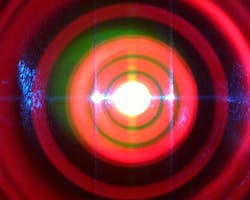Kinetic River receives Phase I SBIR grant from the National Institutes of Health
Custom flow cytometry instrumentation maker Kinetic River (Mountain View, CA) has been granted a Small Business Innovation Research (SBIR) grant from the National Institutes of Health (NIH; Bethesda, MD). The six-month Phase I grant, totaling about $225,000, was issued to the company by the National Institute of General Medical Sciences (NIGMS), an NIH institute fostering extramural research focused on development of innovative biomedical diagnostic and therapeutic platforms.
Related: National Cancer Institute awards Kinetic River with contract for modular flow cytometer
The SBIR grant is helping to fund the development of the company's Arno cell-analysis technology. This approach is aimed at expanding the multiplexing capabilities of flow cytometry while reducing the compensation issues connected with spectral overlap of fluorescent dyes, and reducing instrument footprint and complexity. Having proven the concept with internal funding in early-stage tests, the company is now looking to accelerate the Arno development timeline with the newly available resources.
"Our proprietary Arno technology could have a wide impact in the flow cytometry industry, from reducing the size and cost of workhorse, 6-9 color instruments, to enabling machines able to measure 40 or more cell parameters simultaneously," says Giacomo Vacca, Ph.D., president of Kinetic River.
The Arno technology can be incorporated in both cell analyzers and cell sorters, and is completely compatible with accepted workflows. Two product versions are planned. Arno-1 is an 8- to 11-parameter analyzer (including forward and side scatter) using a single laser, with no compensation required for overlapping fluor emission spectra. Arno-1 will work with all common assays, as well as many assays of moderate complexity.
Arno-2, the high-channel-count version of the platform, is designed for detection of at least 40 parameters, and could be extended to 60 parameters. Arno-2 will be aimed at immunophenotyping and similar applications with a need for a high degree of multiplexing.
For more information, please visit www.kineticriver.com.
